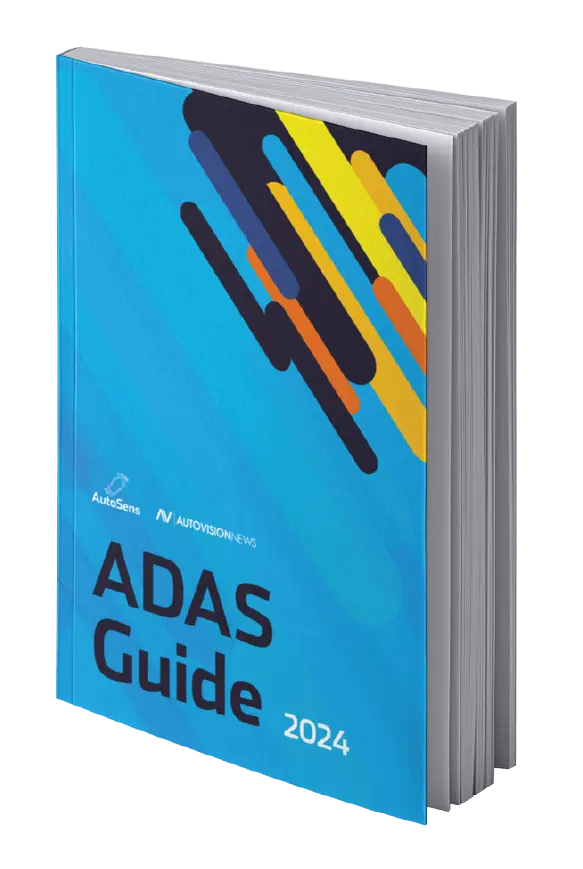We had an exclusive interview with Simon Block, CTO at Optalert, read below to hear about what he had to say about ‘The Johns Drowsiness Scale and yet Global Safety Regulation EU2021/1341 requires manufactures to be compliant with the Karolinska Sleepiness Scale. What is the difference?’
1. Optalert talks about the Johns Drowsiness Scale and yet Global Safety Regulation EU2021/1341 requires manufacturers to be compliant with the Karolinska Sleepiness Scale. What is the difference?
The Johns Drowsiness Scale is an objective drowsiness scale, scientifically developed over the last 20 years. The KSS is a subjective measure, relying on the driver self-assessing their drowsiness.
Objective measures, like the JDS, are independent of the observer. They do not rely on the perception of how drowsy the subject feels. A good example of an objective measure is the use of a thermometer to measure a person’s temperature, rather than them subjectively assessing how hot or cold they feel.
Optalert’s objective method for measuring drowsiness involves a composite biomarker extracted from the driver’s eyelid movements. Blinks are characterized by their duration and frequency of occurrence, both of which change when a person is drowsy. You cannot fake drowsiness. These measurements are accurately and gradually scaled, providing a precise reflection of a subject’s impairment due to drowsiness levels.
Questionnaires such as the KSS have been developed over many years of research and have been widely used in sleep medicine. But they are subjective and therefore not as reliable as an objective measure.
To illustrate, consider how you would answer these two questions?
- On a 9-point drowsiness scale, can you accurately differentiate between being a 6 or a 7?
- Is my self-reported score of 3 equivalent to your score of 3?
Subjectivity means the perception and interpretation of questions will differ between people when they assess their own drowsiness score, a difference that is difficult to reconcile.
The KSS is a good start in a driver monitoring system (DMS), but a more objective and accurate solution will:
- minimize false positives, reducing the likelihood of driver frustration from unnecessary warning sounds; and
- minimize false negatives, reducing the likelihood of an accident ultimately saving lives.
2. Optalert talks about drowsiness as a state of continuum. How does that impact the driver?
With modern advancements in advanced driver-assistance systems (ADAS), cars can now be programmed to provide a multitude of countermeasures to driver impairment when necessary. However, in their current form many drowsiness detection systems, regulations, and assessment programs classify drowsiness as a simply defined ‘yes’ or ‘no’ rather than a state of continuum. When the driver monitoring system (DMS) indicates that a driver is drowsy, the car would have to utilize all countermeasures. This could have adverse effects:
- If a driver experiencing early-stage drowsiness is served with all available countermeasures, it would annoy the driver, leading them to shut these safety systems off.
- If a car only produces warnings when a driver is already experiencing late-stage drowsiness, microsleeps, or sleeps, the driver might be too far down the path for the warnings to be effective.
3. How does Optalert recommend we address driver frustration from such alerts and what is the best way to apply countermeasures?
As the area of DMS becomes increasingly complex and capable, it will need an effective strategy for delivering warnings and countermeasures to drivers that are appropriate to the level of impairment. Drowsiness levels can form the basis for when a given response should occur. Implementing countermeasures that are proportional in severity ensures drive comfort and quality without compromising on safety. It can also be used to extend safe driving duration, as we have found working with commercial fleets for the last 15 years.
Countermeasures work best if a person’s drowsiness level can be objectively and accurately quantified on a graduated scale, providing the resolution necessary to differentiate between early-stage drowsiness, late-stage drowsiness, and everything in between. Pairing different levels of drowsiness with their appropriate countermeasures provides us with a system that can prolong safe driving time.
Once a driver’s drowsiness level is quantified, a multi-level countermeasure approach to remedy their drowsiness is:
- Awake:No special countermeasure required from the system. All ADAS warning systems are set to the lowest level of sensitivity, giving the driver liberty to drive in comfort and at ease.
- Early drowsiness onset:Preservation phase – to allow the driver to focus on the main driving tasks, the system “makes driving easy” by enabling automatic cruise control, lane maintenance, and reducing distractions through warning systems.
- Early-stage drowsiness: Driver stimulation phase – the system aims to stimulate the driver to counter further drowsiness by enhancing feedback about lane keeping accuracy, applying acoustic and haptic feedback about lane departure, and amplifying haptic feedback of the adaptive cruise control (stronger acceleration/deceleration).
- Drowsiness:Modification of driving conditions – the system aims to introduce sensory stimulation to the driver by modifying the ambient conditions: introducing fresh air (ventilation or opening the window slightly), increasing entertainment system volume, and reducing cabin temperature.
- Late-stage drowsiness: High stimulation phase – the system aims to increase driver engagement, “making driving difficult” to further engage the driver in the driving activities by disabling automatic cruise control, increase steering torque (resistance), reducing spring suspension, amplifying motor sound, and even introducing controlled disturbances.
- Falling asleep: Protection phase – the system tries to compensate for the driver’s potential impairment by advising the driver to stop and removing limitations placed on all warnings.
- Sleep: Unresponsive phase – introduction of minimum risk maneuvers (MRM) and stopping the car safely.
4. What key elements are included in your current release and what are your plans for the next release?
Our current release includes:
- Objective and predictive drowsiness protection
- Real-time driver state detection and conversion to KSS
- Compliance with Euro NCAP, GSR, and worldwide measurement standards
- Rapid integration with existing driver monitoring systems via a well-documented software development kit (SDK)
- Built-in filtering to better adapt to driver monitoring systems (DMS)
Longer-term, we have an exciting roadmap of features in the pipeline. We’ve also been conducting research in various areas to uncover other possible applications of our technology that could transform driver monitoring systems in the future.
Optalert is proud to be a Network Sponsor of InCabin Phoenix 2023. Our General Manager of Research and Development, Dr Trefor Morgan, will be delivering a presentation at the conference, focusing on how to use a physiological biomarker for drowsiness using eyelid movements. This methodology can easily be incorporated into all vision-based driver monitoring systems, today. He will also discuss other neurological biomarkers that can be derived from eyelid movement, such as the onset of Alzheimer’s, epilepsy, and neurotoxicity.
If you would like to schedule time to meet Dr Morgan or any of the Optalert team, please email us at info@optalert.com.
Join us at InCabin Phoenix from 15-17 March! Grab your pass here: https://auto-sens.com/incabin/phoenix/pass/








